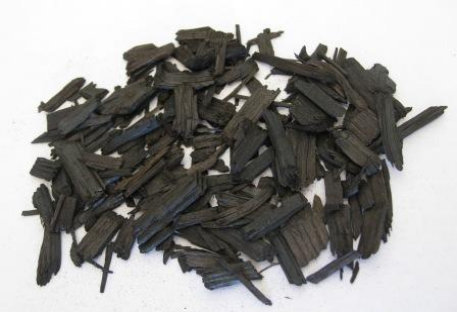





Most pyrolysis technologies generate two or more liquid biofuels of different viscosity that can be physically
separated and are usually refined further before use in applications such as boilers, turbines, or combustion engines. The energy
content of these liquids are roughly half of the calorific value of diesel.
A key advantage of pyrolysis is that a rather crude, bulky
feedstock ‘biomass’ is converted into a higher value, dense energy product that is easily transportable.
The concept of pyrolsis has
been used extensively in the (petro-)chemical industry; only recently has the technology been expanded to recover carbon contained
in waste material, including municipal solid waste.
Canadian companies are in the forefront of commercializing so-called ‘fast pyrolysis’
or ‘flash pyrolysis’ technologies. These are generally large, often fluidized bed reactors geared towards industrial applications
consuming several hundred tonnes of material a day.
Smaller, decentralized approaches employ less sophisticated technology such
as rotational kilns that can process feedstock of varying properties. Rotary pyrolysis kilns have even be used for soil remediation
with the objective of removing oil and alike contaminations from the soil rather than generating a fuel.
The robustness of the process
is partly due to the reactor temperature. Pyrolysis is done at temperatures of 400°C to 450°C, i.e. way below the temperature of combustion
(850° - 1,000°C) and below the point where clinker may be built by a feedstock with a low ash melting temperature.
As the process
happens under the exclusion of air, there are no direct emissions other than from burning gas for heating the process itself. Water
usage varies depending on the process.
Most pyrolysis technologies require the feedstock to be dry (15% or less moisture content).
Wet feedstock reduces the yield of liquid fuel and is therefore first passed through dryers upstream of the pyrolysis reactor. The
energy required for heating the dryer is usually supplied by the gas generated as a by-product of pyrolysis process.
Torrefaction
or carbonization is a closely related process that happens at even lower temperatures (250° - 400°C) with the objective of creating
a energy-dense, solid biofuel (‘biochar’ or ‘bio-coal’). Torrefaction processes treat gas and liquids as a by-products.
Gasification, in turn, occurs at temperatures higher than that of pyrolysis processes. Its main objective is – as the term suggests – production of a clean gas that can be used for advanced processes, such as internal combustion engines for the generation of electricity.
Today many of the ‘gasifiers’ on the market are not designed or operated to produce a higher value product, such as electricity. A number of North American biomass boiler companies have used the term ‘gasification’ for a two-stage combustion process, conjuring up visions of alchemy, i.e., changing common metals into gold, while the process really provides heat only. These combustion processes may be referred to as ‘heat gasifiers’ and do not involve a thermo-chemical conversion process to a higher value product.